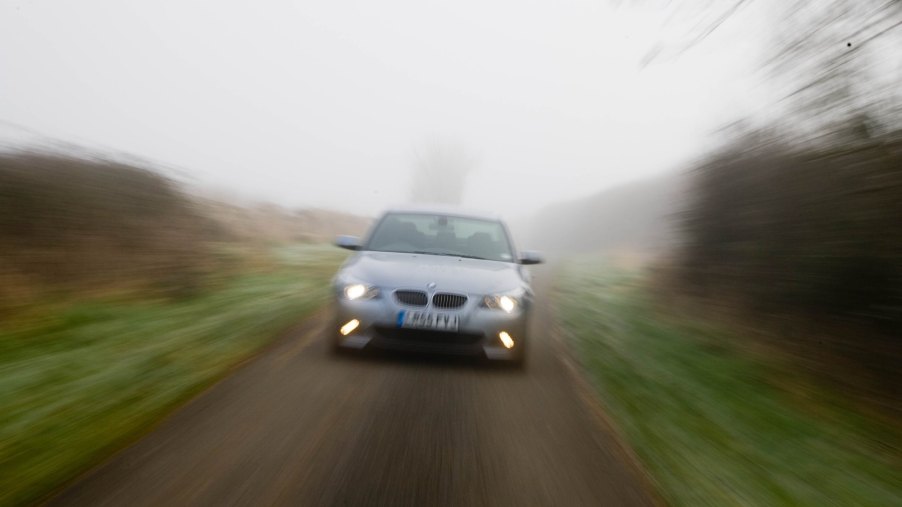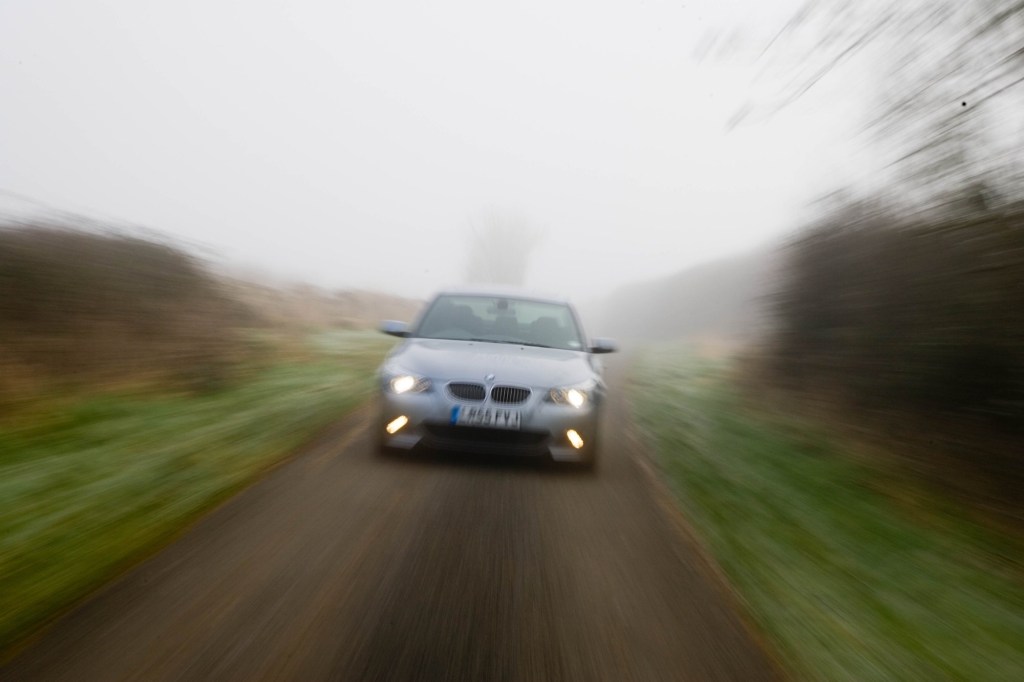
Which Headlight Beams Are Best to Use in Fog?
Although drivers should be well aware of the rules of the road by the time they have their license and can legally drive, there are always a few things about car safety that are either forgotten or are never discussed in driver’s ed. One commonly misunderstood topic is when to use certain types of headlights, especially in fog.
Learn more about the headlights you have in your vehicle, which ones are best for fog, and when you should use high beams.
Which types of headlights does your vehicle have?

Most vehicles come with at least three types of headlights: regular headlights, low beams, and high beams. Regular headlights should be used for most night-driving situations because they help to illuminate road lines, signs, and other objects on the road. Regular headlights should be turned on 30 minutes before sunrise and after sunset, DriversPrep.com explains. This time of day is known as civil twilight.
Low beams, also called fog lights, direct light downward. They can help you see the lines on the road and objects that are immediately in front of your car, which might include bikers, other cars, branches in the road, and animals. These are best used in poor weather conditions, such as rain or snow, because they can help you stay on the road when you can’t see very far in front of you.
High beams are best used at night when you’re driving at high speeds and there are no other cars around. These lights are incredibly bright, and they can help you see farther up the road. These lights cast straight or upward instead of downward.
Which headlight beams should you use in fog?
As mentioned earlier, low beams are best for poor weather, including fog. Fog can drastically reduce the distance you can see in front of you, but low beams can at least help you see the lines on the road so that you can stay in your lane. It’s also important to reduce your speed because you can’t see nearly as much in dense fog.
Regular headlights and high beams are not well suited for fog, rain, or snow because the water droplets in the air act like tiny mirrors that can reflect the intense light back at you, reducing your field of vision. Also, Firestone recommends using low beams in city driving when the roads are lit up with other light sources and other drivers are nearby. This prevents you from blasting other drivers with ultra-bright beams.
Most older cars have fog lights, but newer models generally don’t come with fog lights. According to The New York Times, some car companies say the latest high-tech headlights render fog lights obsolete, especially because most people are driving at speeds that are too high for them to work the way they are intended anyway.
When are high beams a better choice?
High beams can help you see animals, street signs, and other objects farther ahead, and they can drastically improve safety at night compared to regular headlights. High beams are also helpful for night driving on country roads or interstate highways when you are traveling 40 mph or above. At these high speeds, it’s important to be able to see objects way ahead of you, and high beams make this possible.
You should always return to regular headlights whenever another car is 500 feet in front of or behind you because these lights can blind other drivers and create dangerous situations. Definitely don’t use high beams when you’re surrounded by other cars or driving in wet or foggy conditions.


